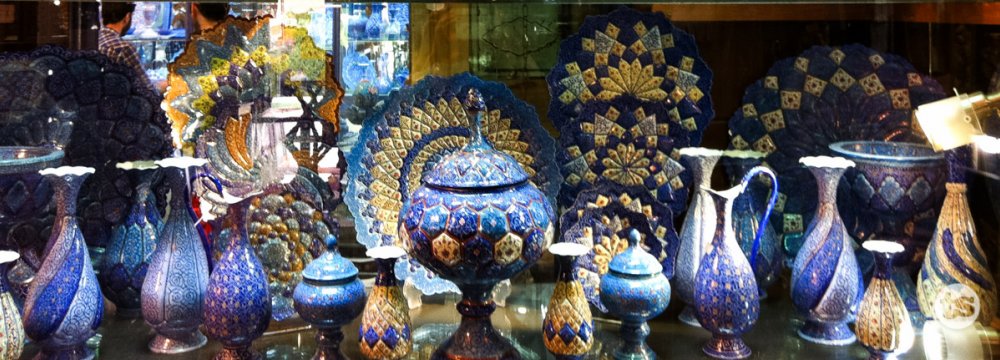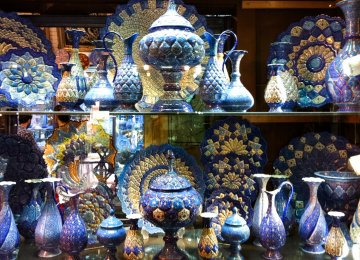Iran’s annual handicraft export revenue has tripled since the government took office in 2013, setting a record compared to past figures, a senior official at Iran's Cultural Heritage, Handicrafts and Tourism Organization said. Bahman Namvar Motlaq, handicrafts deputy at ICHHTO, added that annual export income has increased from $100 million to $300 million over the past five years, IRNA reported.
However, the total revenue is estimated to be higher, as handmade jewelries and suitcase trade were not included in the figures. Suitcase trade or shuttle trade refers to a small retailer's purchase of goods in a different country in order to resell them. Shuttle trade is often snuck through customs without declaration in order to save on tariffs.
"Although the achievement is commendable, the industry requires structural reforms and practical strategies, apart from emulating successful global plans on handicraft development," the official said at a recent meeting with artisans and lawmakers.
"In the past few years, authorities have grabbed every possible opportunity to introduce Iranian handmade artworks to the world, which has resulted in global recognition for six cities and a village as world craft centers."
Reportedly, Iranian cities that achieved international recognition from UNESCO's World Crafts Council include Tabriz in East Azarbaijan for its hand-woven carpets, Isfahan for its handicrafts, Mashhad in Khorasan Razavi Province for its gemstones and Lalejin in Hamedan Province for its pottery.
Marivan in Kurdestan Province and Sirjan in Kerman Province have also received UNESCO's recognition respectively for Kalash (traditional handmade shoes) and kilim (flat tapestry-woven rugs). Kalpourgan Village in Sistan-Baluchestan Province became the World Crafts Village for pottery made by women.
Isfahan Province gained its status as the World Crafts City in September 2015 by UNESCO's World Crafts Council.
From the total of 297 types of handicrafts in Iran, 196 originate in Isfahan, creating jobs for over 40,000 people.
Given the steady progress in the field, officials predict the annual revenue from handicrafts will hit $1 billion by the end of the Sixth Five-Year Development Plan (2017-22), with Isfahan playing an important role. The international recognition provides the cities with an opportunity to further promote their artworks at the global level.
"The regular presence in international art and handicrafts events could make a huge contribution to the sector," Motlaq stressed. Along with China and India, Iran is among the world’s top three producers of handicrafts.
Among the numerous types of handicrafts in Iran, the most well known are felts, tribal rugs, glasswork, pottery, ceramics and tiles, traditional furniture, copper and brass ornaments, woodwork (including mosaic, wood carving and inlaid), enamel work and engravings.
A large number of small, medium-sized and large production units are active in the country's handicrafts sector.






Add new comment
Read our comment policy before posting your viewpoints